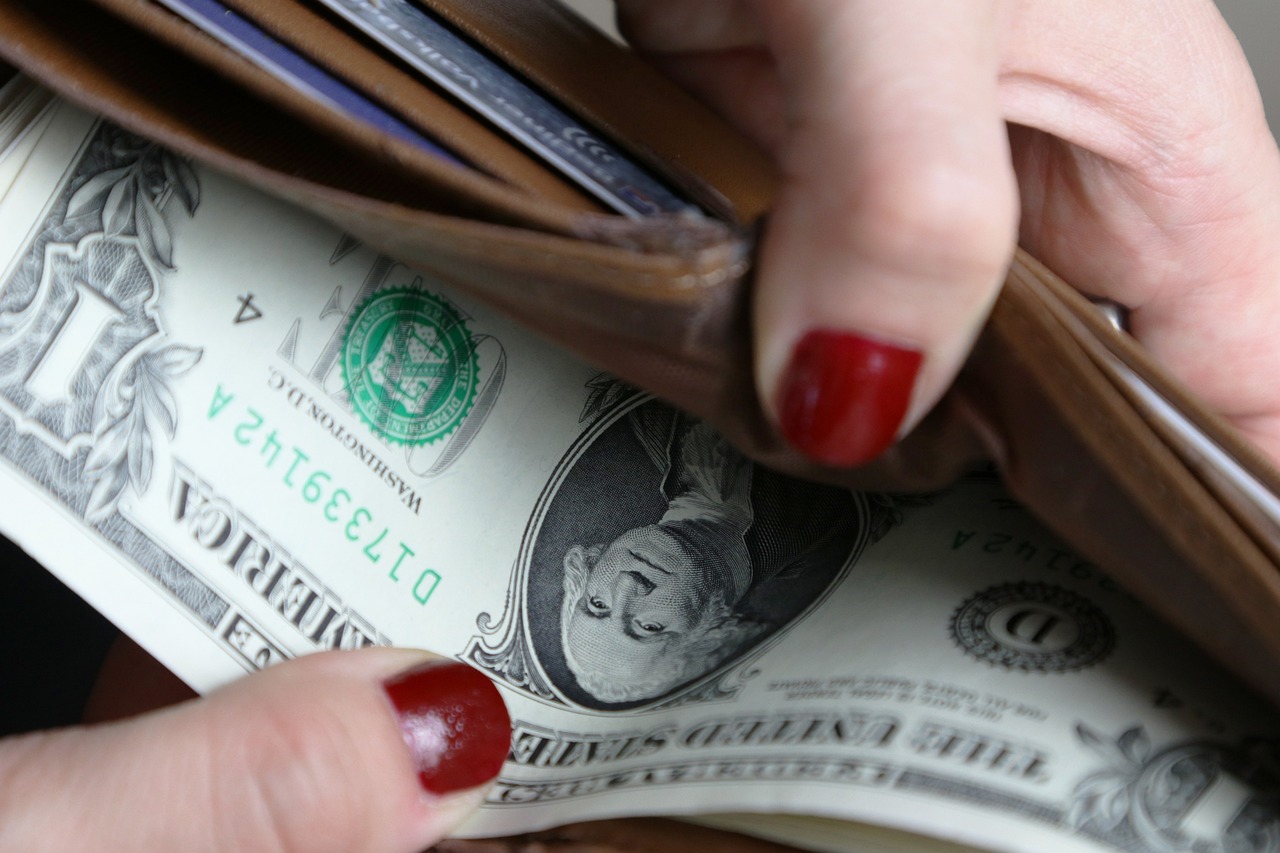Essential Steps to Rebuild Your Finances Post-Disaster
Experiencing a disaster can feel like a whirlwind, leaving you disoriented and scrambling to piece your life back together. Whether it’s a natural calamity like a hurricane or an unexpected personal crisis, the aftermath can wreak havoc on your finances. But fear not! Rebuilding your financial stability is not only possible but can also be a transformative journey. In this article, we’ll walk you through essential steps to regain control over your financial situation. Think of it as a roadmap guiding you through the storm, helping you navigate the turbulent waters of financial recovery.
First and foremost, it's important to take a deep breath and assess the damage. Understanding the full extent of your financial impact is vital. This means evaluating your losses—be it in terms of property, income, or savings—and identifying your immediate financial needs. Just like a ship needs to know how much water it’s taking on before it can set sail again, you need to grasp your financial standing to build a solid foundation for recovery.
Once you have a clear picture of your situation, the next step is creating a recovery budget. A well-structured budget acts as your financial compass, steering you towards essential expenses while also allowing you to plan for long-term goals. It’s like packing for a trip: you wouldn’t throw everything into your suitcase; instead, you’d prioritize what you truly need. By recognizing which expenses are crucial during recovery, you can allocate your resources effectively.
Additionally, building an emergency fund is a critical step in your recovery journey. This fund serves as a safety net, preparing you for future unexpected expenses. Imagine it as your financial life jacket—keeping you afloat when the waves get rough. To build this fund, consider setting aside a small portion of your income or any financial assistance you receive. Every little bit counts!
Moreover, it’s essential to cut non-essential costs. Reducing unnecessary expenses can significantly impact your recovery. Think of it as decluttering your home; by removing what you don’t need, you create space for what truly matters. Review your monthly expenses and identify areas where you can trim the fat—maybe it’s dining out less or canceling subscriptions you rarely use.
As you navigate this financial recovery, don’t forget to explore available financial assistance options. Various resources, including government programs, grants, and community support, can provide much-needed aid. It’s like having a lifeline thrown to you when you’re struggling to stay afloat. Research local organizations and online resources that can help you find the support you need.
Finally, as you rebuild, remember that your credit score may take a hit during a disaster. Rebuilding your credit is crucial for regaining financial health. Start by understanding your credit report—this is your financial report card, and knowing how to read it is essential. Look for any errors and address them promptly. Additionally, establishing new credit lines responsibly can help improve your creditworthiness over time. Think of it as planting seeds in a garden; with care and attention, they’ll eventually blossom into a healthy financial future.
In conclusion, recovering your finances post-disaster is undoubtedly a challenging endeavor, but with a proactive mindset and the right strategies, you can emerge stronger than before. By assessing the damage, creating a recovery budget, building an emergency fund, cutting non-essential costs, exploring financial assistance, and focusing on rebuilding your credit, you’re setting yourself up for long-term success. Remember, every step you take is a step towards financial stability and peace of mind.
- What should I do first after a disaster? Assess the damage to your finances and identify immediate needs.
- How can I create a recovery budget? List essential expenses, prioritize them, and allocate resources accordingly.
- Where can I find financial assistance? Look for government programs, community support, and grants available in your area.
- How can I rebuild my credit? Review your credit report, pay bills on time, and establish new credit lines responsibly.
- What is an emergency fund, and why is it important? An emergency fund is savings set aside for unexpected expenses, acting as a financial safety net.

Assessing the Damage
When disaster strikes, it can feel like the ground has been pulled out from under you. The chaos that follows can leave you disoriented, especially when it comes to your finances. The first step in your recovery journey is to assess the damage. This means taking a comprehensive look at your financial situation to understand the full extent of the impact. You might be asking yourself, "Where do I even start?" Well, let’s break it down.
Begin by gathering all your financial documents. This includes bank statements, bills, insurance policies, and any other relevant paperwork. Having a clear picture of your current financial landscape is crucial. You may want to create a damage assessment checklist to ensure you don’t miss anything. Here’s a simple format to follow:
| Document Type | Details | Status |
|---|---|---|
| Bank Statements | Last 3 months | Collected |
| Insurance Policies | Home, auto, health | Reviewed |
| Outstanding Bills | Utilities, loans, credit cards | Pending |
Next, take a moment to evaluate any losses you’ve incurred. This could be property damage, loss of income, or even unexpected medical expenses. It’s important to quantify these losses as accurately as possible. You might find it helpful to create a loss inventory to keep track of what you’ve lost:
- Property Damage: Estimate the cost to repair or replace damaged items.
- Income Loss: Calculate how much income you’ve lost during the recovery period.
- Medical Expenses: Keep track of any new medical bills that arise due to the disaster.
Once you’ve assessed your losses, the next step is to identify your immediate financial needs. This is where you’ll want to prioritize what’s essential. Ask yourself, "What do I need right now to get back on my feet?" This could include:
- Basic living expenses like food and shelter
- Transportation costs to get to work or appointments
- Healthcare needs that can’t wait
After pinpointing your immediate needs, consider reaching out to your insurance provider. They can help you understand what coverage you have and how to file a claim. Don’t hesitate to ask questions; it’s your right to know what you’re entitled to. Remember, insurance can be a lifeline during such turbulent times.
Lastly, keep a record of every step you take during this assessment process. Documenting your findings not only helps you stay organized but also prepares you for any future discussions with financial advisors or insurance agents. Think of it as your financial roadmap to recovery. The clearer the path, the easier it will be to navigate through the storm.

Creating a Recovery Budget
After a disaster strikes, the road to financial recovery can feel overwhelming, but creating a solid recovery budget is your first step toward regaining control. A well-structured budget acts as a roadmap, guiding you through the tumultuous terrain of expenses and helping you prioritize what truly matters. Think of it as your financial GPS, steering you away from potential pitfalls and towards a more stable future.
To kick things off, start by gathering all your financial documents. This includes bank statements, bills, and any other relevant paperwork that can give you a clear picture of your current financial situation. Once you have everything in one place, you can begin to categorize your income and expenses. This is where you’ll want to distinguish between your essential needs and the nice-to-haves. Essentials include housing, utilities, groceries, and medical expenses, while non-essentials might be dining out, subscriptions, and entertainment. By laying this groundwork, you can see where your money is going and where you can make cuts.
Next, it's crucial to prioritize your essential expenses. You might want to create a simple table to visualize your budget better:
| Category | Estimated Monthly Cost | Notes |
|---|---|---|
| Housing | $XXXX | Rent or mortgage payments |
| Utilities | $XXXX | Electricity, water, gas |
| Groceries | $XXXX | Food and household supplies |
| Transportation | $XXXX | Gas, public transport |
| Medical Expenses | $XXXX | Insurance premiums, medications |
As you fill in this table, be honest about your expenses. It’s tempting to underestimate costs, but doing so can lead to bigger problems down the line. Once you have a clear picture of your necessary expenses, you can move on to the next step: creating a recovery budget that aligns with your current income and savings goals.
But how do you ensure your budget is sustainable? One effective strategy is to build an emergency fund, even if it’s just a small amount each month. This fund acts as a financial buffer for unexpected expenses that may arise during your recovery. Think of it as your safety net; you never know when you might need it, but when the time comes, you’ll be grateful it’s there.
Another critical aspect of your recovery budget is cutting non-essential costs. This might feel daunting at first, but remember, every little bit helps! Look for subscriptions you can cancel, dining out less frequently, or finding free entertainment options in your community. By trimming these non-essentials, you can free up funds to cover your essential expenses and even contribute to your emergency fund.
Creating a recovery budget isn’t just about managing your current situation; it’s about setting yourself up for future success. As you adjust to your new financial reality, regularly review your budget and make changes as needed. Life is unpredictable, and being flexible will help you navigate through any financial storms that may come your way.

Identifying Essential Expenses
When disaster strikes, it often feels like your world has been turned upside down. In the midst of chaos, one of the most critical steps in your financial recovery is . But what does that really mean? It’s about distinguishing between what you absolutely need to survive and what can wait. Think of it as being a firefighter in a burning building; you need to prioritize saving the people and things that matter most before worrying about the decorations on the walls.
To effectively identify your essential expenses, start by making a list of your current financial obligations. This includes everything from housing and utilities to food and transportation. Here’s a simple framework to help you categorize your expenses:
- Housing: Rent or mortgage payments, property taxes, and homeowners insurance.
- Utilities: Electricity, water, gas, and internet services that keep you connected.
- Food: Groceries and essential supplies that sustain you and your family.
- Transportation: Fuel, public transit costs, and any necessary vehicle maintenance.
- Healthcare: Medical bills, prescriptions, and necessary insurance premiums.
Once you have this list, take a good hard look at it. Are there any expenses that you can temporarily reduce or eliminate? For instance, can you cut back on dining out or limit subscriptions that are not essential during this recovery period? This is where the rubber meets the road; it’s about making tough choices that will pay off in the long run.
Another important aspect to consider is the timing of these expenses. Some bills are due monthly, while others may have more flexible payment options. Prioritize your payments based on due dates and the consequences of missing them. For example, while it’s crucial to pay your rent on time to avoid eviction, you might have some leeway with credit card payments.
As you navigate this process, remember that it’s perfectly normal to feel overwhelmed. Many people find it helpful to consult with a financial advisor or a trusted friend who can provide a fresh perspective. They may help you see that while some expenses seem essential, they could be trimmed down. Think of it as having a personal trainer for your finances; they can help you get back on track and hold you accountable.
Ultimately, identifying essential expenses is about taking control of your financial situation. It’s about understanding your needs versus your wants, and making informed choices that align with your recovery goals. By focusing on what truly matters, you’ll be better positioned to rebuild your finances and regain stability.
Q: How do I determine what my essential expenses are?
A: Start by listing all your expenses and categorizing them into needs (like housing and food) and wants (like entertainment). Focus on the needs first.
Q: Can I negotiate my bills to lower essential expenses?
A: Yes! Many service providers are willing to negotiate rates or offer payment plans, especially during times of financial hardship.
Q: Should I keep track of my expenses during recovery?
A: Absolutely! Keeping a detailed record of your expenses will help you stay accountable and make adjustments as needed.

Emergency Funds and Savings
Building an emergency fund is not just a safety net; it's your financial lifeline during turbulent times. Imagine standing on a cliff, and rather than looking down at the rocky sea below, you have a sturdy rope tied securely around your waist. That rope is your emergency fund, ready to catch you if you fall. After a disaster, unexpected expenses can arise at any moment, and having a financial buffer can mean the difference between recovery and financial ruin.
So, how do you go about creating this essential fund? First, it's crucial to set a clear goal. Financial experts often recommend saving at least three to six months' worth of living expenses. This might sound daunting, especially after a disaster, but every little bit counts. Start by evaluating your monthly expenses and determine how much you would need to cover your essential costs—think rent, utilities, groceries, and transportation. Once you have this number, you can break it down into manageable savings targets.
For instance, if your monthly expenses total $2,000, your goal for an emergency fund might be between $6,000 and $12,000. While that may seem overwhelming, consider these practical steps:
- Automate Your Savings: Set up automatic transfers from your checking account to your savings account. Treat your savings like a bill that must be paid each month.
- Start Small: If saving $500 seems impossible, start with $50 a month. Gradually increase the amount as you regain your financial footing.
- Use Windfalls Wisely: Tax refunds, bonuses, or any unexpected income can be a great opportunity to boost your emergency fund.
In addition to saving, consider creating a separate savings account specifically for your emergency fund. This way, you can avoid the temptation to dip into it for non-emergency expenses. Look for accounts with high-interest rates to maximize your savings potential. Even a small interest rate can add up over time, giving you a little extra cushion when you need it most.
Remember, building an emergency fund is a journey, not a sprint. It may take time to reach your goal, but the peace of mind that comes with knowing you have a financial safety net is invaluable. As you work on this, keep your long-term financial health in mind. An emergency fund not only helps during crises but also sets the stage for future savings and investments.
In conclusion, establishing an emergency fund is a fundamental part of financial recovery post-disaster. It provides a sense of security and prepares you for whatever life throws your way. So, take that first step today—your future self will thank you!
Q: How much should I have in my emergency fund?
A: Aim for three to six months' worth of living expenses, but start with whatever you can manage.
Q: Where should I keep my emergency fund?
A: It's best to keep it in a high-yield savings account that is easily accessible but separate from your everyday spending accounts.
Q: Can I use my emergency fund for non-emergencies?
A: It's advisable to only use your emergency fund for unexpected expenses like medical emergencies, car repairs, or job loss. Non-urgent expenses should be covered by your regular budget.

Cutting Non-Essential Costs
When you're navigating the stormy seas of financial recovery, one of the most effective lifeboats you can grab onto is cutting non-essential costs. You may be surprised at how much you can save by simply reassessing your spending habits. Think of it as decluttering your financial life; just like a closet full of clothes you never wear, your budget can be filled with expenses that no longer serve you.
Start by taking a hard look at your monthly expenses. Create a list of everything you spend, and then categorize these expenses into two groups: essential and non-essential. Essentials include things like rent, utilities, groceries, and transportation. Non-essentials, on the other hand, cover items like subscription services, dining out, and luxury purchases. You might be shocked to discover how many non-essential costs are sneaking into your budget!
Once you've identified these non-essential costs, it’s time to make some tough decisions. Ask yourself questions like, “Do I really need this subscription?” or “Can I survive without that daily coffee shop visit?” It's not about depriving yourself; it's about making conscious choices that align with your recovery goals. For instance, if you’re spending $50 a month on a magazine subscription, consider whether you can find similar content online for free or at a lower cost. You could even swap magazines with friends to keep things fresh without spending a dime!
Another effective strategy is to implement the 30-day rule. Whenever you feel the urge to make a non-essential purchase, wait 30 days. This waiting period allows you to reflect on whether the item is truly necessary or just a fleeting desire. You might find that after a month, the urge has passed, and your wallet will thank you!
Furthermore, consider negotiating or reviewing your current services. For example, are you paying too much for your internet or cable? Many providers offer competitive rates, and simply reaching out to them could lead to significant savings. You can also explore alternatives like cutting the cord on cable and opting for streaming services that better fit your budget.
Lastly, don’t forget to track your progress. Create a simple chart or table to visualize your savings over time. Seeing your financial recovery unfold can be incredibly motivating and can help you stay focused on your goals. Here’s a quick example of what your savings table might look like:
| Month | Non-Essential Costs Cut | Total Savings |
|---|---|---|
| January | $100 | $100 |
| February | $150 | $250 |
| March | $200 | $450 |
By cutting non-essential costs, not only do you regain control over your finances, but you also create a cushion that allows you to face unexpected expenses with confidence. Remember, every little bit helps, and as you trim the fat from your budget, you’ll find yourself in a much stronger position to rebuild your financial future.
Q: How can I identify non-essential costs in my budget?
A: Start by tracking all your expenses for a month. Categorize them into essential and non-essential, focusing on items that are not necessary for your day-to-day living.
Q: What are some quick wins for cutting costs?
A: Look for subscription services you rarely use, dining out less frequently, and finding cheaper alternatives for services like internet or phone plans.
Q: Is it really worth it to cut small expenses?
A: Absolutely! Small savings can add up significantly over time, and they contribute to a more robust financial recovery.

Exploring Financial Assistance
Recovering from a disaster can feel overwhelming, especially when it comes to finances. Fortunately, you’re not alone in this journey. There are numerous resources available that can help you get back on your feet. Understanding what financial assistance options are out there is crucial to your recovery. Think of it as a safety net that can catch you when you fall, providing the support you need to bounce back.
First off, let’s talk about government programs. Many local, state, and federal agencies offer financial aid specifically designed for disaster recovery. For example, the Federal Emergency Management Agency (FEMA) provides grants for temporary housing, home repairs, and other disaster-related expenses. To access these funds, you’ll usually need to apply through their website or contact your local office. It’s important to act quickly, as some assistance programs may have deadlines.
In addition to government support, there are also non-profit organizations that offer financial assistance. Groups like the American Red Cross and various local charities often provide immediate relief funds, food, and shelter. These organizations can be a lifeline during tough times, so don’t hesitate to reach out to them for help. You might be surprised at the resources available in your community.
Another option to consider is insurance claims. If you had insurance coverage before the disaster, filing a claim can help you recover some of your losses. It’s essential to document everything—take photos of damages and keep records of any expenses incurred. This documentation will be invaluable when dealing with your insurance company. Remember, it’s your right to receive fair compensation for your losses, so don’t shy away from advocating for yourself.
Lastly, consider looking into community support programs. Many local governments and organizations are dedicated to helping residents recover from disasters. This could include grants, low-interest loans, or even food assistance programs. You can often find this information on your city or county’s official website. It’s like digging for gold; you never know what treasures you might uncover!
In summary, exploring financial assistance options is a vital step in your recovery journey. By leveraging government programs, non-profit organizations, insurance claims, and community support, you can create a robust plan to regain your financial footing. So, take a deep breath, gather your resources, and remember that help is out there. You’ve got this!
- What types of financial assistance are available after a disaster?
There are government grants, non-profit organization aid, insurance claims, and community support programs available for disaster recovery. - How do I apply for FEMA assistance?
You can apply for FEMA assistance online or contact your local FEMA office for guidance. - Can I get help from local charities?
Yes, many local charities and non-profit organizations provide immediate relief and financial assistance to those affected by disasters. - What should I do if my insurance claim is denied?
If your insurance claim is denied, review the denial letter, gather documentation, and consider appealing the decision or seeking legal advice.

Rebuilding Credit
After a disaster, it's not uncommon for your credit score to take a hit. Whether it’s due to missed payments, increased debt, or simply the chaos of getting your life back on track, rebuilding your credit is a crucial step toward financial recovery. Think of your credit score as your financial reputation; just like a bad review can hurt a business, a low credit score can limit your options when it comes to loans, credit cards, and even renting a home. So, how can you start to mend this important aspect of your financial health?
First things first, understanding your credit report is essential. Your credit report is a detailed account of your credit history, including loans, payment history, and any outstanding debts. You can obtain a free copy of your credit report from major credit bureaus like Equifax, Experian, and TransUnion. Once you have your report, take the time to review it thoroughly. Look for errors or discrepancies that could be dragging your score down. If you find any inaccuracies, dispute them immediately; correcting these mistakes can give your score a quick boost.
Another important step in rebuilding your credit is making timely payments. Payment history accounts for a significant portion of your credit score, so it’s vital to stay on top of your bills. Set up reminders or automate payments to ensure that you never miss a due date. This might mean prioritizing your expenses to ensure that essential bills are paid first. If you're struggling to keep up, consider reaching out to creditors to negotiate payment plans or deferments. They may be more understanding than you think, especially if you explain your situation.
As you work on making timely payments, you may also want to consider establishing new credit lines. This might sound counterintuitive, but having available credit can actually help improve your credit score, as long as you use it responsibly. Start with a secured credit card or a credit-builder loan. These options are designed for individuals looking to improve their credit scores. Just remember, the key to success here is to keep your credit utilization low—ideally below 30% of your available credit limit. This shows lenders that you can manage credit wisely.
Finally, patience is key. Rebuilding your credit is not an overnight process. It takes time, consistency, and a commitment to making sound financial choices. Celebrate small victories along the way, like paying off a debt or seeing your score inch upward. Each step you take brings you closer to the financial stability you seek.
In summary, rebuilding your credit post-disaster involves:
- Understanding and reviewing your credit report for accuracy.
- Making timely payments to improve your payment history.
- Establishing new credit lines responsibly.
- Practicing patience as you work toward your financial goals.
Remember, every small effort counts. With strategic planning and a proactive approach, you can rebuild your credit and regain control over your financial future.
1. How long does it take to rebuild credit after a disaster?
Rebuilding credit can take several months to a few years, depending on your previous credit history and the steps you take to improve it. Consistency is key!
2. Can I rebuild my credit without taking on new debt?
Yes! You can rebuild your credit by ensuring timely payments on existing debts, correcting errors on your credit report, and maintaining low credit utilization.
3. What should I do if my credit report has errors?
You should dispute any errors you find on your credit report with the credit bureau. They are required to investigate and rectify any inaccuracies.
4. Are there credit repair services that can help?
While there are credit repair services available, it's often better to handle credit repair on your own. Many of the actions required can be done for free or at a low cost.

Understanding Credit Reports
When you're on the road to financial recovery, one of the most important tools at your disposal is your credit report. This document is like a snapshot of your financial history, detailing how you’ve managed credit over time. Understanding your credit report is essential, especially after a disaster when your financial situation might be in disarray. But what exactly is a credit report, and why should you care about it?
A credit report is compiled by credit bureaus and includes information such as your credit accounts, payment history, and any public records like bankruptcies or foreclosures. It’s crucial to know that your credit report is not just a number; it contains detailed information that lenders use to evaluate your creditworthiness. If you’ve faced financial hardships, such as those caused by a disaster, your credit report may reflect missed payments or increased debt levels. This can be disheartening, but understanding the report can help you take actionable steps to improve your credit score.
To access your credit report, you can request it from the three major credit bureaus: Equifax, Experian, and TransUnion. You’re entitled to one free report from each bureau every year. It’s a good idea to take advantage of this to monitor your credit regularly. When reviewing your report, pay special attention to the following sections:
- Personal Information: This includes your name, address, and Social Security number. Ensure that all details are accurate and up-to-date.
- Account Information: Here, you’ll find a list of your credit accounts, including credit cards, mortgages, and loans. Look for any discrepancies or accounts you don’t recognize.
- Payment History: This section shows your payment record. Late payments can significantly impact your credit score, so check for any errors.
- Public Records: If you’ve had any bankruptcies or liens, they will be listed here. Understanding how these affect your credit can help you plan your recovery.
Once you have your credit report, it’s time to interpret it. Look for any negative items that could be dragging your score down. If you find inaccuracies, such as payments marked as late when they weren’t, you can dispute these errors with the credit bureau. This process can help improve your score and reflect your true creditworthiness.
In addition to correcting errors, consider the following strategies to boost your credit score:
- Make Timely Payments: Set up reminders or automatic payments to ensure you never miss a due date.
- Reduce Your Credit Utilization: Aim to keep your credit card balances below 30% of your credit limit. This shows lenders that you can manage credit responsibly.
- Limit New Credit Applications: Each time you apply for credit, it can result in a hard inquiry, which may temporarily lower your score.
Understanding your credit report is a powerful step in rebuilding your finances post-disaster. By keeping a close eye on your credit history and taking proactive measures, you can regain control and work towards achieving a healthier financial future.
1. How often should I check my credit report?
You should check your credit report at least once a year from each of the three major credit bureaus. This helps you catch errors and monitor your credit health.
2. What should I do if I find an error on my credit report?
If you find an error, contact the credit bureau that issued the report. You'll need to provide documentation supporting your claim.
3. How long do negative items stay on my credit report?
Most negative items, like late payments, can stay on your report for up to seven years, while bankruptcies can remain for up to ten years.
4. Can I improve my credit score quickly?
While some improvements can happen relatively quickly, like paying down debt or correcting errors, rebuilding credit takes time and consistent effort.

Establishing New Credit Lines
After a disaster, one of the most important steps in rebuilding your financial health is . This process can seem daunting, especially if your credit score has taken a hit due to unforeseen circumstances. However, it’s crucial to understand that rebuilding your credit is not just about repairing what was lost, but also about creating a more resilient financial future.
First and foremost, it’s essential to approach this process with responsibility and awareness. New credit accounts can help improve your credit score, but they can also lead to more debt if not managed wisely. Think of it like planting a garden; if you don’t nurture the plants (or in this case, your credit), they won’t flourish. Start by researching different types of credit options available to you:
- Secured Credit Cards: These require a cash deposit as collateral, making them easier to obtain even with a damaged credit score.
- Credit Builder Loans: Offered by some banks and credit unions, these loans are designed specifically to help you build credit.
- Retail Store Credit Cards: While they may have higher interest rates, they can be easier to qualify for and can help you establish a credit history.
When applying for new credit, it’s vital to consider your credit utilization ratio, which is the amount of credit you’re using compared to your total available credit. Keeping this ratio below 30% is generally recommended to maintain a healthy credit score. For instance, if you have a credit limit of $1,000, try to keep your balance below $300. This demonstrates to lenders that you can manage credit responsibly.
Another crucial aspect of establishing new credit lines is making timely payments. Late payments can significantly damage your credit score, so set reminders or automate payments to ensure you never miss a due date. Think of this as watering your garden regularly; consistent care leads to healthier growth. Additionally, as you begin to establish a positive payment history, you’ll likely see your credit score improve over time.
Lastly, be cautious about how many new credit lines you open at once. Each credit inquiry can temporarily lower your score, so it’s best to space out your applications. A good rule of thumb is to apply for new credit only when necessary and to focus on accounts that will positively impact your credit profile.
In summary, establishing new credit lines post-disaster is a critical step towards financial recovery. By selecting the right types of credit, managing your credit utilization, making timely payments, and being selective about your applications, you can rebuild your credit score and enhance your overall financial stability. Remember, this journey takes time and patience, but with the right approach, you can emerge stronger than before.
Q: How long does it take to rebuild my credit score?
A: Rebuilding your credit score can take several months to a few years, depending on your financial habits and the severity of the damage. Consistent, responsible credit usage is key.
Q: Can I establish new credit lines if I have a bankruptcy on my record?
A: Yes, you can still establish new credit lines after bankruptcy. It may be more challenging, but secured credit cards and credit builder loans are good options to consider.
Q: Should I pay off my old debts before applying for new credit?
A: While it’s beneficial to pay off old debts, it’s not always necessary before applying for new credit. Focus on managing your new accounts responsibly to start improving your credit score.

Long-Term Financial Planning
After a disaster, it may feel like you're standing at the edge of a financial cliff, looking down into the abyss of uncertainty. But fear not! With careful planning and a proactive approach, you can absolutely rebuild and even thrive. Long-term financial planning is not just about putting your finances back in order; it’s about crafting a roadmap to a brighter, more secure future. This means setting clear, achievable goals that align with your values and aspirations.
First things first, take a moment to envision where you want to be financially in the next 5, 10, or even 20 years. Having a vision is like having a compass; it helps you navigate through the stormy seas of financial recovery. Ask yourself questions like, “What does financial security look like for me?” or “What dreams do I want to achieve?” Whether it’s buying a home, saving for your children’s education, or planning for retirement, having these goals in mind will guide your decisions.
Next, it’s essential to create a comprehensive financial plan that encompasses your goals. This plan should include:
- Budgeting: Keeping track of your income and expenses will help you identify areas where you can save and allocate funds towards your long-term goals.
- Saving: Establish a savings plan that prioritizes both short-term needs and long-term aspirations. Consider setting up automatic transfers to your savings account to ensure you’re consistently contributing.
- Investing: Once you have a solid savings foundation, think about investing. This could mean opening a retirement account or investing in stocks or bonds. Remember, the earlier you start investing, the more your money can grow over time.
Additionally, regularly reviewing and adjusting your financial plan is crucial. Life is unpredictable, and your financial situation may change due to various factors such as job changes, unexpected expenses, or shifts in your personal goals. Schedule regular check-ins with yourself—perhaps once every six months—to assess your progress and make necessary adjustments. This practice will keep you accountable and ensure that you’re on track to meet your objectives.
Lastly, don’t underestimate the importance of seeking professional advice. A financial advisor can provide tailored guidance based on your unique situation and help you navigate complex financial decisions. They can assist in creating a diversified investment portfolio, optimizing your tax situation, and ensuring you’re on a sustainable path towards achieving your long-term goals.
In conclusion, long-term financial planning post-disaster is about more than just recovery; it’s about building a resilient financial future. By setting clear goals, creating a comprehensive plan, and being adaptable, you can turn the page on a challenging chapter and write a new one filled with promise and stability.
Q: How can I start my long-term financial planning?
A: Begin by setting clear financial goals, creating a budget, and establishing a savings plan. Regularly review and adjust your plan as needed.
Q: Should I invest during recovery?
A: Yes, if you have a solid savings foundation, consider investing. It can help grow your wealth over time, but ensure you understand the risks involved.
Q: How often should I review my financial plan?
A: It’s advisable to review your financial plan at least once every six months or whenever significant life changes occur.
Frequently Asked Questions
- What should I do first after a disaster affects my finances?
Start by assessing the damage to understand how the disaster has impacted your financial situation. Make a list of all losses and identify your immediate financial needs. This foundational step will help you prioritize your recovery efforts effectively.
- How can I create a recovery budget?
To create a recovery budget, list all your essential expenses and categorize them into needs and wants. Focus on covering necessities first, like housing, food, and healthcare. This budget will serve as a roadmap to guide your spending as you rebuild your finances.
- What are essential expenses during recovery?
Essential expenses typically include housing costs, utilities, groceries, and transportation. It's crucial to distinguish between what you need to survive and what you can live without during this challenging time.
- How can I build an emergency fund?
Begin by saving a small amount from any income you receive. Even if it's just a few dollars a week, it adds up over time. Consider setting up a separate savings account specifically for emergencies to keep those funds safe and accessible.
- What are some ways to cut non-essential costs?
Review your spending habits and identify areas where you can trim expenses, such as dining out, subscriptions, or luxury items. Creating a list of your monthly expenses can help visualize where cuts can be made.
- Are there financial assistance options available?
Yes, there are various resources available, including government programs, grants, and community support services. Research local organizations and federal assistance programs that can provide aid tailored to your needs.
- How can I rebuild my credit after a disaster?
Start by reviewing your credit report for any inaccuracies and address them. Make timely payments on any existing debts and consider opening new credit accounts responsibly to improve your credit utilization ratio over time.
- What should I know about my credit report?
Your credit report provides a detailed account of your credit history, including payment history, credit inquiries, and current debts. Understanding how to read it is vital for identifying areas that need improvement.
- Is it necessary to establish new credit lines?
Yes, establishing new credit lines can help improve your credit score if done responsibly. Just ensure you can manage these new accounts and make payments on time to avoid further damaging your credit.
- How important is long-term financial planning after a disaster?
Long-term financial planning is crucial for ensuring lasting stability and security. Setting financial goals and creating strategies to meet those goals will help you recover fully and prepare for any future uncertainties.



















